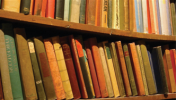AustLit
-
A New History of the Australian Novel
Often engaging and well-written, [literary histories] are also in general derivative and conservative … New histories cannot but rely to a considerable extent on previous ones … It remains to be seen whether the possibilities offered by the web, and by electronic communications in general, will allow for a 'flatter', more horizontal and extensive, even more 'democratic' form of history production in the future.
Read the full introduction to Reading by Numbers by Dr Katherine Bode.
In the popular imagination, archives remain dusty, hidden, forgotten places; in fact, they are increasingly likely to be digital and available online. By changing the form that archives take, technology also transforms the ways in which they can be searched and the types of questions that can be asked of them. This shift affords opportunities for more extensive, data-rich and quantitative approaches to literary historical scholarship. But it does not negate – it actually increases – the potential for what we find in the archives to challenge and transform the way we understand the past. That, in a nutshell, is the premise and the aim of Reading by Numbers.
By mining, modelling and analysing data in a digital archive – AustLit, a comprehensive, online bibliographical record of Australian literature – I present a new history of the Australian novel: one that concentrates on the nineteenth century and the decades since the end of the Second World War, and aims precisely for the more 'extensive' and 'democratic' historiography encouraged by the epigraph.
Read the rest of the introduction to Reading by Numbers by Dr Katherine Bode.
You might be interested in...




